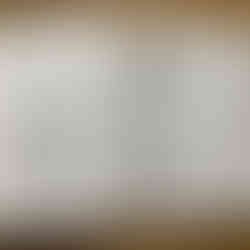Pattern review: Japanese Sewing Book - 'Tops I Want To Wear Now'
- Emma Cartmel
- Aug 16, 2022
- 4 min read
Updated: May 3, 2024
Effortless and minimal. This beautiful book is one of many in the Japanese Sewing Book range and while it won't be for everyone, I recommend taking a look!

This book is one of many in the Japanese Sewing Book range. The designs are beautifully effortless and minimal (everything I love in a pattern), and their loose fitting style means that they are perfect for layering.
I have made up one top from this book, and toiled a second, and while these patterns were not what I am used to, I liked the challenge and required focus. Therefore, I thought I would share my review of the first top I made from the 'Tops I Want To Wear Now' book. While I can understand that this style of pattern will not be for everyone, I still recommend taking a look.
The makers
If I am being honest, I couldn't find a lot out about the makers behind these pattern books. Unfortunately, they don't have much of a presence online, or social media for that matter. However, what I can recommend if you are interested in finding out more about this style of pattern, is checking out @japanesesewingbooks on Instagram. Yi Farn shares her beautiful Japanese Sewing Book makes, and helpful sew-alongs.
What's included in the pattern?
So what should you expect when you purchase one of these books? You will receive a full colour magazine style pattern book featuring over 20 multi-size (S, M, L, LL) clothing patterns. Considering these retail for around €23 ($34AUD), I am sure you can agree, this is pretty good value for money.
The book is essentially broken up into two sections. The first part of the book features full page, colour photographs of the garments, each styled and labelled with a style number.
The second part of the book is dedicated to the instructions for each style. The written instructions aren't all that detailed, but I did find myself relying on the diagrams as I found these to be very clear and helpful.
I must stress that everything contained within this book is in Japanese. While this does make things that little bit more time consuming, I found the instructions and labels easy to understand following a simple Google Translate. However, I did make notes in my copy just to avoid myself continually translating.
Towards the back of the book is a tear out, folded up copy of the patterns. These full size printed pattern pieces are layered on top of one another, requiring you to take a tracing of each pattern piece. I hadn't come across this method before, and while it did require some extra attention, I found that identifying your pattern pieces first by tracing them in a different colour made it a little less confusing.
It is also worth pointing out that the seam allowance is not included with these patterns. Instead this needs to be added by hand. This was only a small niggle as the diagrams are so clearly labelled with the required seam allowance. The hardest part was simply remembering to add it!
What's involved in sewing these patterns
I would position this book, and I am assuming the others in the range, around the intermediate skill level. While the designs are relatively minimal, requiring pretty straightforward sewing, the process of creating the patterns (translating, tracing and adding seam allowance) can be a little fiddly. Some knowledge of pattern making would definitely be advantageous, but isn't a requirement. You will also need some materials and equipment that you don't always need when using a standard commercial pattern. For example, you will need tracing paper or a tracing wheel to create your patterns.
Sewing these patterns will have you practising some pretty useful sewing skills, from gathering, pleating, binding necklines, shirring, to creating hi-low hems, keyhole openings, spaghetti straps, and bows.
The fit
I had no issues with the peplum blouse (style #4). My only comment would be in regards to the bow at the back neck. Despite using a lightweight fabric, the weight of the bow still pulls the blouse towards the back.
It is worth noting that this style, and most in the book, are quite flowy and loose-fitting so they are definitely a little more forgiving when it comes to fit than other styles.
Fabric
The loose fitting, floaty designs within this book definitely lend themselves to lightweight fabrics like cotton voile or gauze, lighter weight linens or silk. For the peplum blouse I made, I used a 100% cotton double gauze fabric I purchased on Etsy, and I found it to not only be a dream to sew, but to gather and sit beautifully.
Styling
I love pairing looser styles with skinnier bottoms. Therefore, when it comes to the peplum blouse, I love to pair it with a simple pair of black skinny jeans. I also find longer peplum tops like this add interest under contrasting loose fitting jumpers in the cooler months, and who knows, the bow poking out at the back neck might be a cute detail.
For the remaining styles, the book itself includes beautifully styled photographs, so you won't be stuck for styling ideas!
Please get in touch or leave me a comment. I would love to know your thoughts on this review. Maybe I have even inspired you to check out the Japanese Sewing Books.
Thanks for reading.
Emma xx
This is a personal blog. Any views or opinions contained on this site are my own. I am not affiliated with any brands, products, or organisations mentioned, and do not receive any sponsorship, payment, or other compensation for any of the content on this site.


















Comments